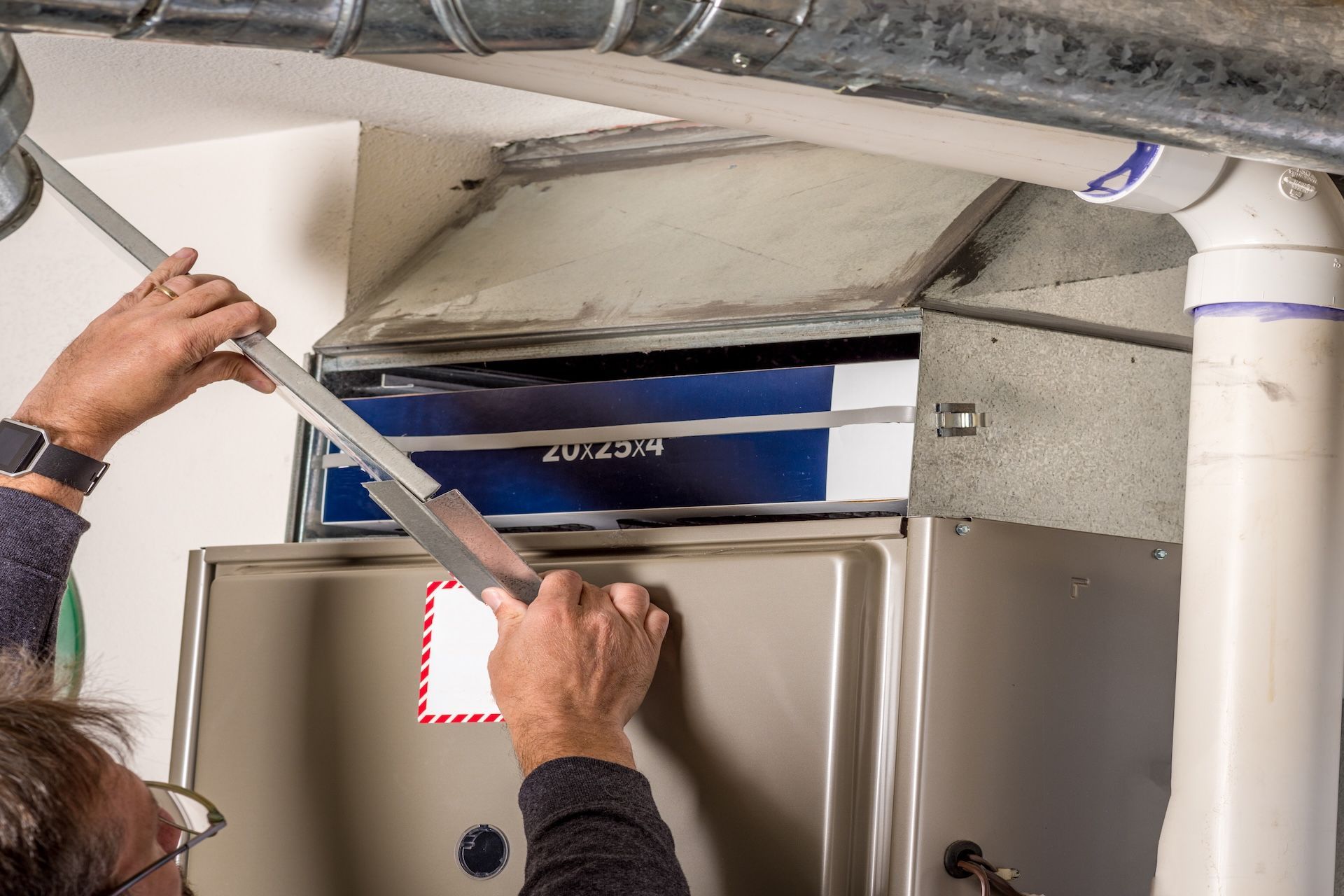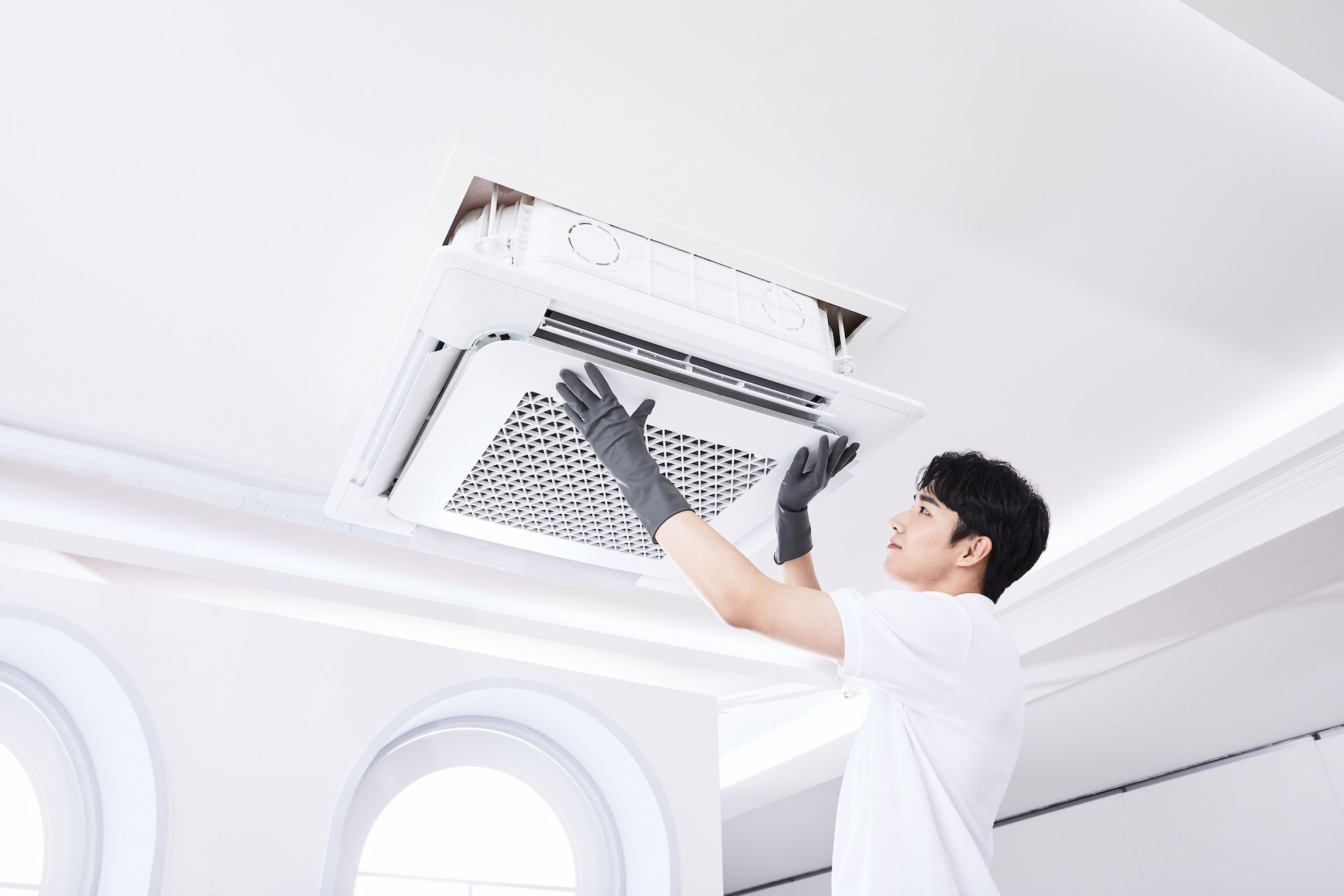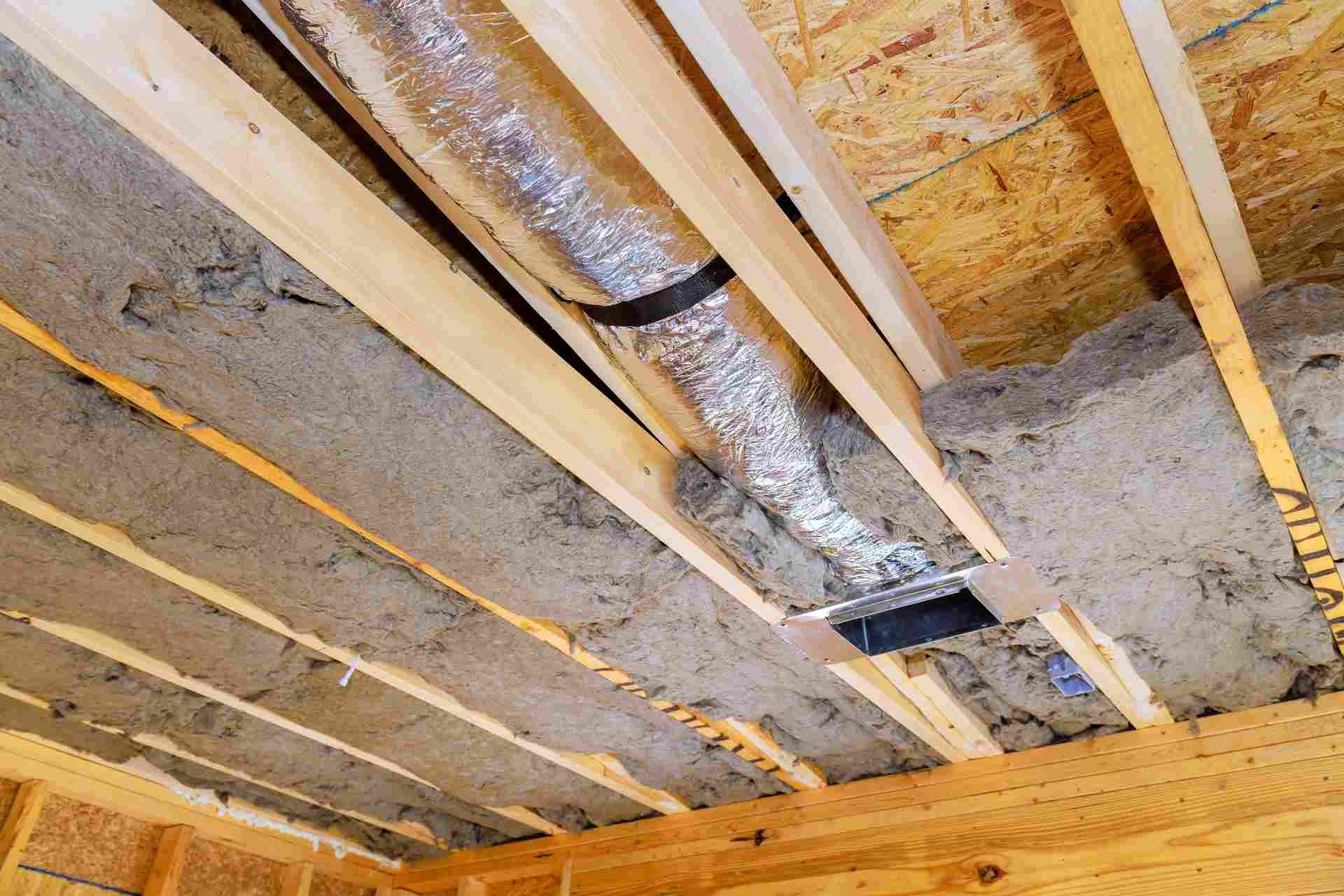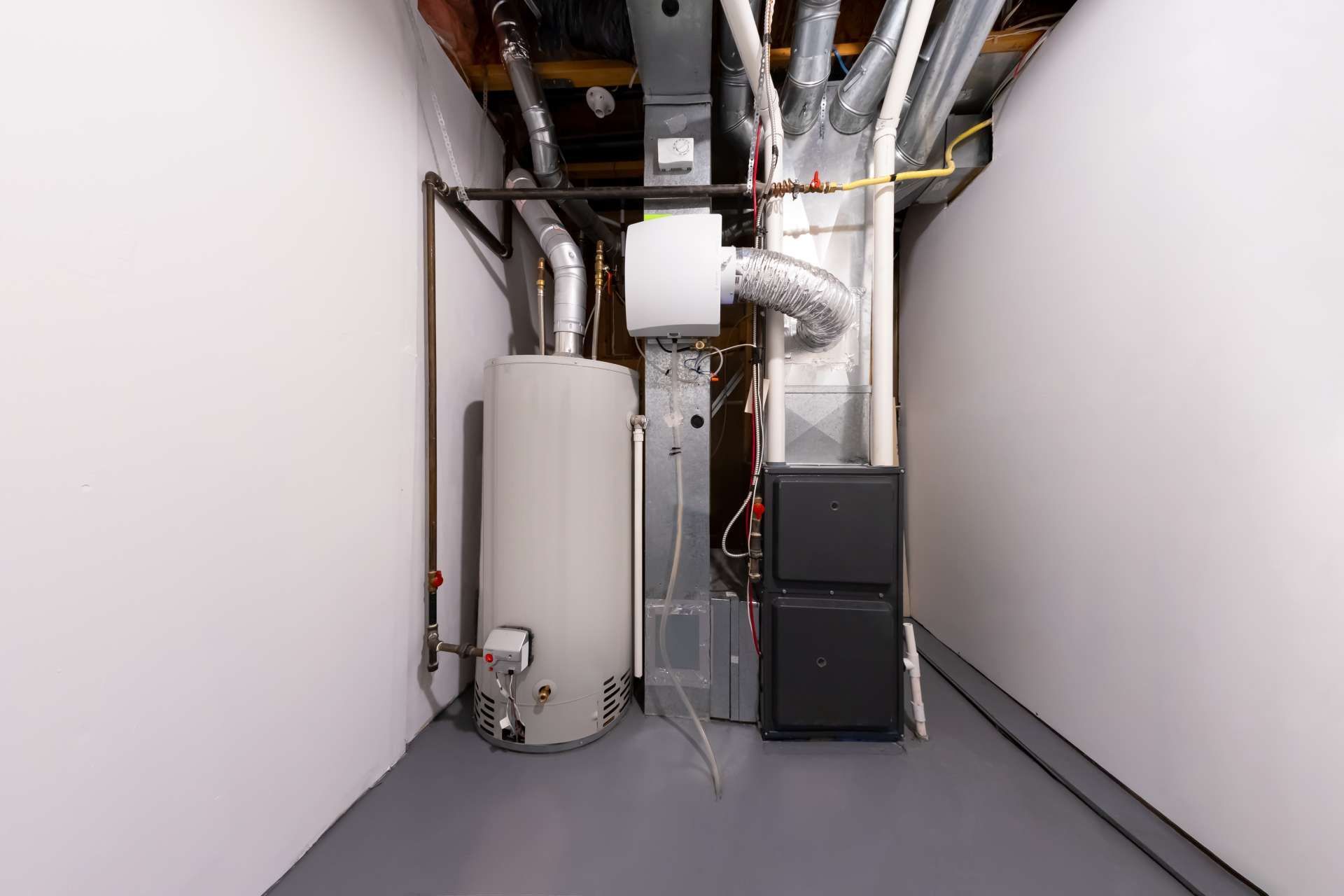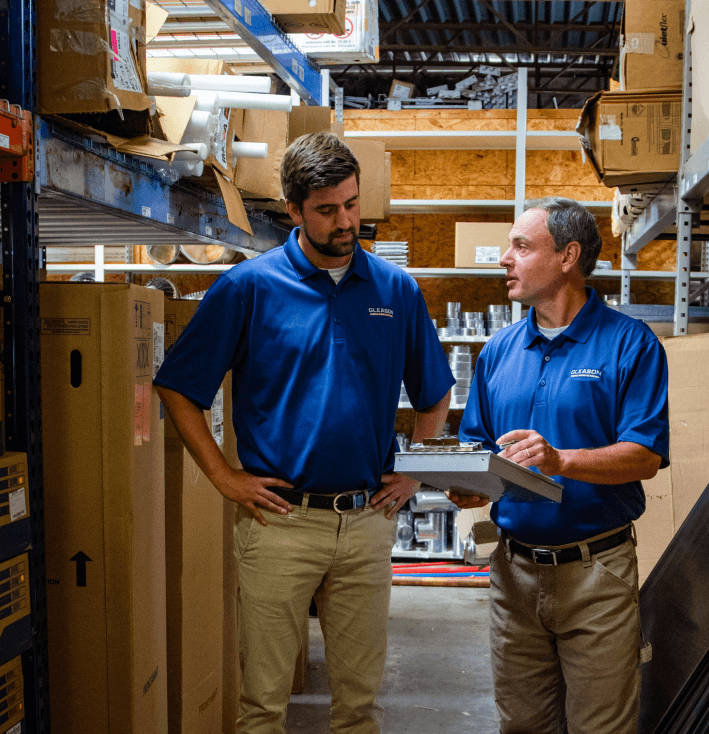Articles
HVAC Contractor Tips and Articles For Your Home
How Does a Whole House Dehumidifier Work?
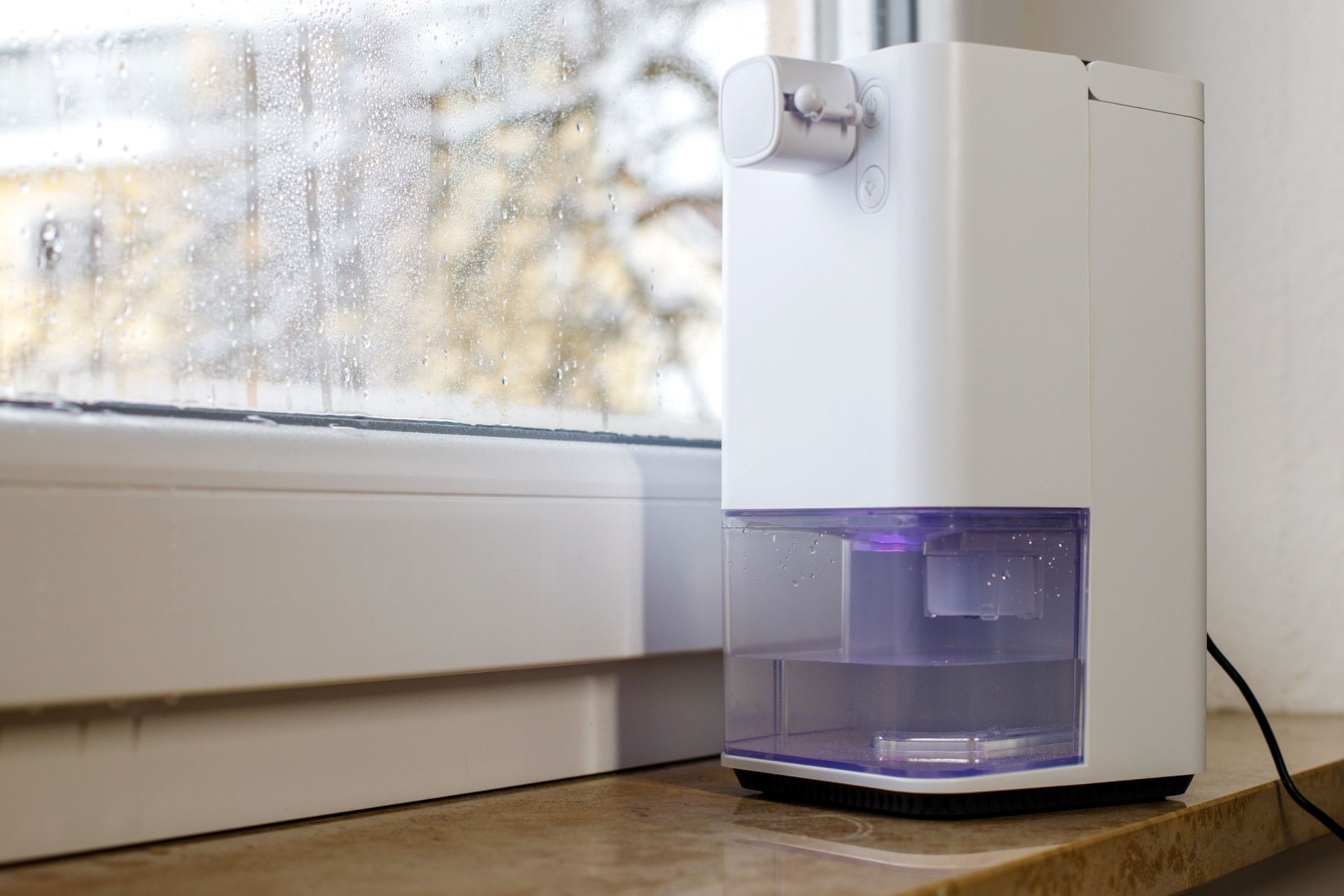
Many homes in the U.S. experience indoor humidity issues, especially in humid climates, putting indoor air quality at risk. High humidity doesn’t just make your home feel sticky — it can also lead to mold, musty odors, and poor indoor air quality. That’s where a whole house dehumidifier comes in. But how does it actually work?
Let’s break it down in a way that’s simple, helpful, and easy to understand. Whether you’re dealing with damp air, allergies, or just want a more comfortable home, learning how a whole house dehumidifier works can help you breathe easier — literally.
What Is a Whole House Dehumidifier?
A whole house dehumidifier is a system that removes extra moisture from the air in your entire home. Unlike a small portable unit that works in just one room, this system is built into your home’s HVAC (heating, ventilation, and air conditioning) system. It helps maintain healthy humidity levels throughout your house.
Ideal indoor humidity is between 30% and 50%. Anything higher can cause problems like mold growth, dust mites, and even wood rot. A whole house dehumidifier keeps your home’s humidity in check without needing to run several portable devices.
Why Is Indoor Air Quality So Important?
You spend about 90% of your time indoors, so the air you breathe matters. High humidity not only feels uncomfortable — it also affects your indoor air quality.
Too much moisture in the air can:
- Make it easier for mold and mildew to grow
- Increase allergy and asthma symptoms
- Create bad smells and stuffy air
- Damage wood furniture, floors, and even electronics
A whole house dehumidifier helps reduce these risks by improving air quality and making your home healthier.
How Does a Whole House Dehumidifier Work?
Let’s walk through the process of how a whole house dehumidifier works — step by step.
1. Air Is Pulled In
The dehumidifier is usually connected to your HVAC system or installed in your home’s ductwork. As air moves through your ducts, the dehumidifier pulls in moist air from every room in the house.
2. Air Passes Over Cooling Coils
Inside the dehumidifier, the moist air flows over cold coils. This cools the air, causing the moisture (water vapor) in the air to condense — just like water forms on a cold glass on a hot day.
3. Water Is Collected
The moisture that was removed from the air is now water. This water is collected in a reservoir or drained out of your home through a special hose connected to your plumbing system. No buckets to empty!
4. Dry Air Is Reheated and Sent Back
After the moisture is removed, the now-dry air is slightly reheated and pushed back through your HVAC system and into every room. This keeps your whole house dry and comfortable.
Whole House Dehumidifier vs. Portable Dehumidifier
You may be wondering, “Why not just use a small, portable dehumidifier?”
Here’s a quick comparison:
| Feature | Whole House Dehumidifier | Portable Dehumidifier |
|---|---|---|
| Coverage | Entire home | One room or small area |
| Installation | Built into HVAC or duct system | Plug-and-play |
| Maintenance | Low | Needs regular emptying/cleaning |
| Noise Level | Quieter (often in basement or attic) | Louder (inside the room) |
| Energy Efficiency | More efficient for large areas | Less efficient overall |
While portable units are helpful for single rooms or basements, a whole house dehumidifier offers long-term comfort and convenience across your entire home.
Benefits of a Whole House Dehumidifier
Investing in a whole house system comes with several perks:
Improved Indoor Air Quality
Say goodbye to damp, musty smells and hello to fresh, clean air.
Mold and Allergen Control
Lower humidity makes it harder for mold, mildew, and dust mites to grow.
Better Comfort
Dry air feels cooler and cleaner, especially in humid summers.
Energy Savings
Less humidity means your air conditioner doesn’t have to work as hard — saving energy and money.
Protects Your Home
Keeps wood, electronics, and insulation safe from moisture damage.
Where Is It Installed?
Most whole house dehumidifiers are installed in one of these locations:
- Near your furnace or HVAC system.
- In your basement.
- Inside attic ductwork.
It’s usually connected directly to your return air ducts or installed as a separate unit with its own air handler. It also ties into your home’s plumbing to drain the collected water.
Do I Still Need Air Conditioning?
Yes, you do. A dehumidifier is not a substitute for an air conditioner. They work together to improve comfort. Your AC cools the air, while the dehumidifier removes moisture.
In fact, using both can lower your energy bills because dry air feels cooler, so you can turn up the thermostat without sacrificing comfort.
What About Whole House Humidification?
You might also hear about whole house humidifiers, especially in winter. These add moisture to dry air, while dehumidifiers remove it. It’s about balance — too much or too little humidity can be harmful.
- In summer, a dehumidifier helps remove sticky moisture from the air.
- In winter, a humidifier adds moisture when the air gets too dry from heating systems.
Both systems are often installed together to give you complete control over your indoor air quality year-round.
How to Know If You Need a Whole House Dehumidifier
Here are some signs you might need one:
- You feel sticky or sweaty indoors
- You see condensation on windows
- You smell musty odors
- You notice mold spots on ceilings or walls
- You have frequent allergy or asthma symptoms
- Your home feels hot even with the AC running
A professional HVAC technician can test your indoor humidity levels and recommend the right solution.
Maintaining Your Whole House Dehumidifier
These systems are fairly low-maintenance, but here are a few simple tips:
- Change air filters regularly (every 1–3 months).
- Clean the coils and drain lines once a year.
- Check for clogs in the drainage system.
- Schedule yearly inspections with a professional.
Final Thoughts: Is It Worth It?
If you want better air quality, lower energy bills, and a more comfortable home, a whole house dehumidifier is absolutely worth considering. It’s a long-term investment in your home’s health and your family’s comfort.
From protecting your furniture to helping you sleep better at night, whole house dehumidifiers do more than just dry the air — they improve your quality of life.
Breathe easier today — contact
Gleason Heating and Air Conditioning today to learn how a whole house dehumidifier can improve your home!
Disclaimer: The information on this website and blog is for general informational purposes only and is not professional advice. We make no guarantees of accuracy or completeness. We disclaim all liability for errors, omissions, or reliance on this content. Always consult a qualified professional for specific guidance.

